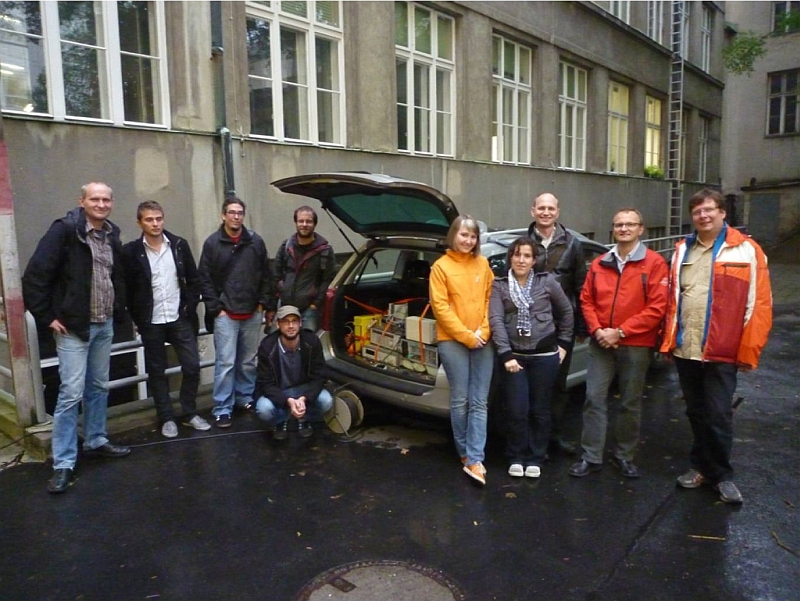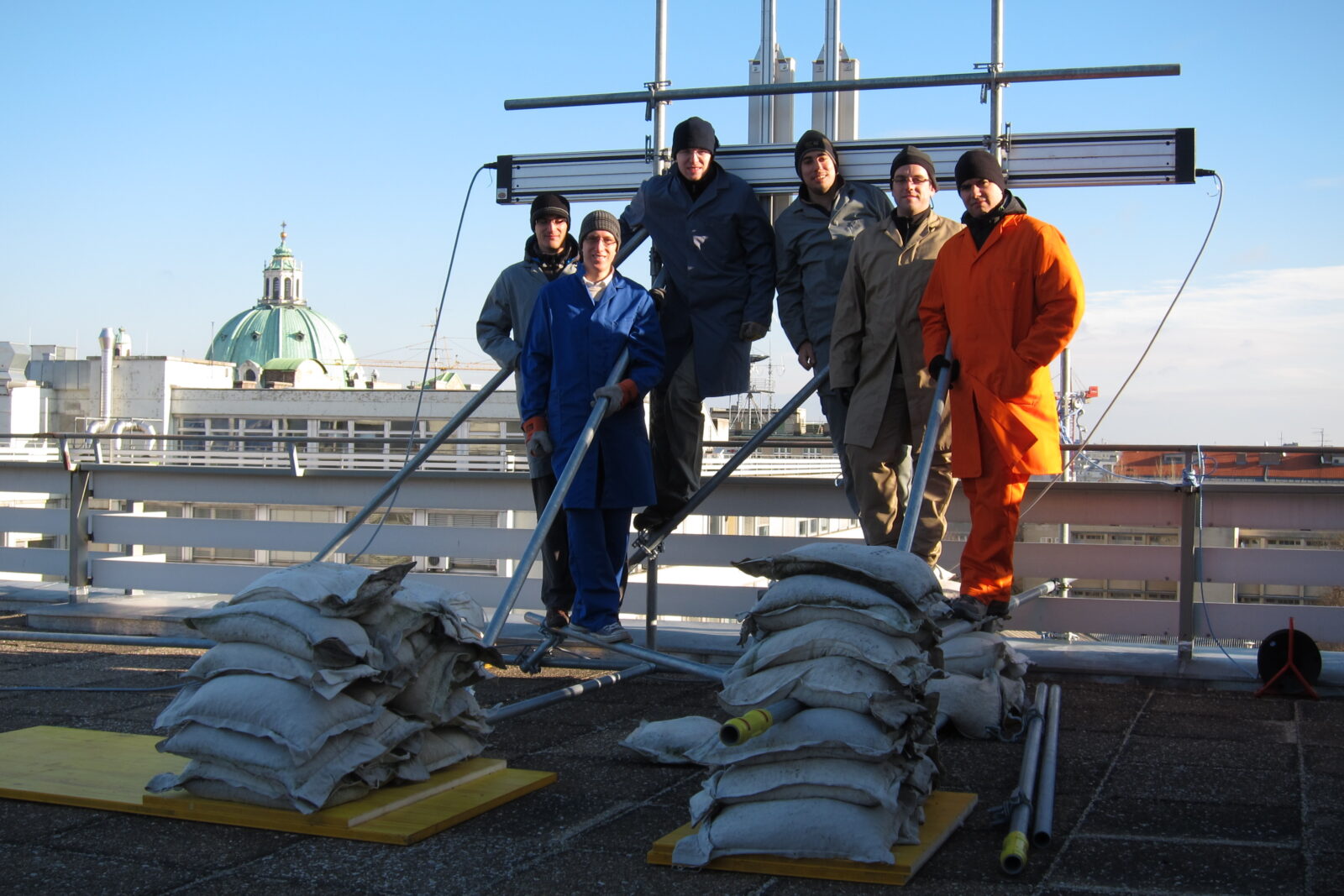Traffic telematics applications are currently under intense research and development for making transportation safer, more efficient, and cleaner. Intelligent Transport Systems (ITS) are central to an integrated approach in road safety so as to avoid potentially dangerous traffic situations and reduce number of accidents. Communication systems which provide “always on” connectivity at data rates between 1 and 10 Mb/s to highly mobile surface traffic (vehicles and trains) are urgently required for developing ITS.
Contact: Mona Shemshaki, Golsa Ghiassi-Hafezi
Smart Tags and Sensornets
The sustainable utilization of new fields of applications requires deep insights in the system and transmission techniques of wireless sensor networks (WSN) as well as identification technologies (RFID). A list of possible (future) application areas
- Support of optimization in business processes by RFID
- Monitoring and controlling to reduce energy consumption
- Warning and preventive systems
- Ambient Assisted Living for disabled or elderly persons
- Wireless applications in telemetry (measuring systems, telebiometry,…)
- Seamless Personal Connectivity
- Industrial automation
- Intra-Vehicle communications
- „Internet of things“
The existing multi-standard and multi-antenna RFID testbed currently supports HF (13.56 MHz) and UHF (866 MHz) operation. Furthermore, an extension for operation at 2.45 GHz is under development. Its rapid prototyping environment is made very flexible in order to support quick turnaround times in algorithmic changes. In particular protocol changes running on a DSP can be directly converted from a C++ simulation environment, avoiding time consuming and error prone manual changes.
Such rapid prototyping environment allows for real-time experiments in particular at the physical layer concerning receiver and advanced detection algorithms. A major strength of our approach in the past years has been that we were able to convert our concepts into real-time experiments and measure their performance including the true physical environment rather than a more or less simplified model of it.
Current standards specify baseline requirements for the tags and the readers separately. True innovation in this field can only foster when both sides of the communications link are jointly optimized. Such joint optimization will be strongly supported by our experimental smart-tag testbed for sensor networks.
Contact: Jelena Kaitovic, Robert Langwieser
Mobile Communications Evolution
Today, wireless communication is omnipresent in the form of 2G and 3G cellular networks. While UMTS Long Term Evolution networks (LTE), the fourth generation of mobile broadband are being rolled out, we investigate new transmission and receiver techniques as well as cooperative schemes for the future generations of mobile communications.
Therefor we developed a MIMO testbed that allows for measurements in a real world environment in a very flexible way usually only simulations provide. The testbed consists of three identically transmitters at different rooftop locations with four antennas each and one receiver with four antennas. The transmit signals are computed in software, are then transmitted in real time over real-world channels before the evaluation of the received signals is performed offline after the measurement. The time consuming task of implementing algorithms on hardware is not required.
Our experimental work is supplemented by a suite of simulators:
- The Vienna LTE-A Downlink Link Level Simulator
- The Vienna LTE Uplink Link Level Simulator
- The Vienna LTE Downlink System Level Simulator
Contact: Martin Lerch, Sebastian Caban
Nearfield Power Efficiency
RFID tags are massively used for contactless identification and manufacturing logistics. There is currently a growing industry and market for RFID tags in Austria, and many companies are actively involved in its development. Nevertheless, many open questions remain. In this module we are dealing with efficient power and data transfer for contactless chip-cards. Working frequency is 13.56 MHz and the information is transferred between a card and a reader through magnetic coupling.
Currently, we are focused on the development of an equivalent model for chip and coil (two elements of the chip-cards). We are developing simulator for coil analysis (from the card coil geometry parameters to the equivalent circuit parameters) and coil synthesis (from the equivalent circuit parameters to the card coil geometry parameters). Chip has non-linear behavior, so we are characterizing it on the fundamental frequency and on the harmonics for the wide range of input power.
Chip cards in which coil and chip are soldered or glued together hold a major share of the RFID market. Under mechanical stress the connection is a potential source of failure. That is why we are also investigating non-galvanic connection between antenna and the chip where connectivity is provided through electromagnetic coupling.
Spurious emissions from contactless chip-cards pose important challenges both from the regulatory issues and from the point of security and privacy due to eavesdropping. A precisely defined connectivity and interrogation range for contactless chip cards is of prominent importance. In this topic the goal is to ensure that the range over which the emissions from the tag can be detected and decoded be precisely limited. This investigation covers both the in-band emissions and all relevant out-of-band spurious emissions caused by the chip’s nonlinearities.
In the long run, upcoming topics could be how to read out several hundred MByte or even GByte from contactless memory cards within a fraction of a second or how to maintain contactless smartcards with ultra-low form factors with nearly of the size of the chip itself. Another upcoming topic is to efficiently charge smart phones or even notebooks via the NFC interface.
Contact: Nikola Gvozdenovic, Shrief Rizkalla
Integrated Vehicle Chassis Antennas
Vehicle chassis antennas are key components for dependable wireless connectivity. The required number of antennas in a standard vehicle is unexpectedly large. Antennas are used for communication to the road-side infrastructure (2G, 3G, 4G, and ITS G5), for keyless access, as well as navigation, broadcast receivers, multimedia applications and vehicular radar.
Future vehicles will be made more lightweight in order to reduce the overall carbon footprint. This motivates the widespread use of carbon fiber re-inforced composites.
In the Module No. 5 of the Christian Doppler Laboratory the RF properties of such composite materials are investigated. The RF characterization is the first step towards integrated vehicle-chassis antennas. This reduces the drag coefficient, the noise emission and, last-not-least, the height of the vehicle.
Contact: Gerald Artner, Robert Langwieser

